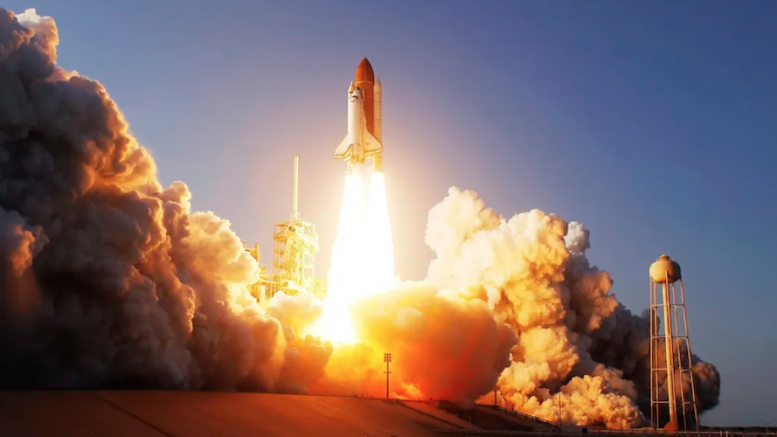Space never ceases to fascinate, whether it is our reaching the extra-terrestrial or the extra-terrestrial reaching us.
We experienced a taste of the former on Jan. 9, when the U.K. Space Agency initiated a new era of domestic spaceflights with the first orbital mission from a British spaceport. The ‘Start me up’ program (named after the 1981 Rolling Stones hit) plans to make Britain the first nation in Europe to offer end-to-end launch services to small satellite manufacturers.
In partnership with Virgin Orbit, Cosmic Girl (a modified Boeing 747) took off from the Newquay spaceport in Cornwall with the LauncherOne rocket (carrying seven satellites) under its wing. Unfortunately, the rocket suffered what was described as “an anomaly” and failed to reach the required altitude of 500 km.
The U.K. Space Agency will no doubt reach for the extra-terrestrial again (mindful of the ‘Start me up’ lyrics, which include “Give it all you got; You got to never, never, never stop”). Meanwhile, news in November confirmed that fascinating extra-terrestrial material continues to reach us, and two new minerals have been identified in a 15-tonne meteorite found in Somalia.
Minerals and the elements that form them are well categorized here on Earth. To date, only 118 elements have been identified, and 24 of these are not naturally occurring. These elements complete seven periods (rows) in the periodic table, and elements to form an eighth period remain purely hypothetical.
Distinct minerals are formed by a combination of one or more of these elements. A mineral must, according to the International Mineralogical Association (IMA), be naturally occurring and formed by geological processes (on Earth or an extra-terrestrial body), solid in its natural occurrence (an exception to this rule is mercury, which was included before the current rules were established), and be well defined in terms of its crystallographic structure and chemical composition. Based on these requirements, the IMA recognizes over 5,800 minerals found on Earth.
Professor Chris Herd of the University of Alberta’s Department of Earth and Atmospheric Sciences is amongst those excited by the Somalia meteorite minerals, which could yield new uses and innovative applications. As he explained, “Whenever you find a new mineral, it means that the actual geological conditions, the chemistry of the rock, was different than what’s been found before.”
Although new to natural science, rapid identification of these minerals was possible because they had already been synthetically created. The minerals have been named elaliite and elkinstantonite; the first being named from the meteorite itself (which was found near the town of El Ali) and the second after Lindy Elkins-Tanton, who is a professor at Arizona State University’s School of Earth and Space Exploration.
These two extra-terrestrial minerals come almost exactly one year after a new mineral that came directly, for the first time, from Earth’s lower mantle (the region between the planet’s core and crust).
The new mineral was found as specks of calcium silicate compound inside a Botswana diamond that formed at a depth of over 700 km (most diamonds form at only 120-250 km). The mineral was named davemaoite in honour of pioneering Chinese-American geophysicist Ho-Kwang ‘Dave’ Mao.
Inclusions normally detract from the value of a diamond but these are an exception, and have been a gift to Oliver Tschauner from the University of Nevada, who is examining super-deep diamonds to see what they can tell us about the interior of Earth. He describes the discovery as a step forward in scientists’ quest to model the evolution of the Earth’s mantle in greater detail.
Like elaliite and elkinstantonite, davemaoite has been artificially synthesized in the laboratory but was thought to be too volatile to exist naturally. Also like the other two new minerals, experts believe that davemaoite could reach us within meteorites.
Both space and the Earth’s lower mantle represent new frontiers for material scientists. If you’ll excuse the split infinitive, these mineral researchers have a mission to boldly go where no man has gone before.
— Dr. Chris Hinde is a mining engineer and the director of Pick and Pen Ltd., a U.K.-based consulting firm. He previously worked for S&P Global Market Intelligence’s Metals and Mining division.


Be the first to comment on "The view from England: Space rocks and rockets, the final frontier"